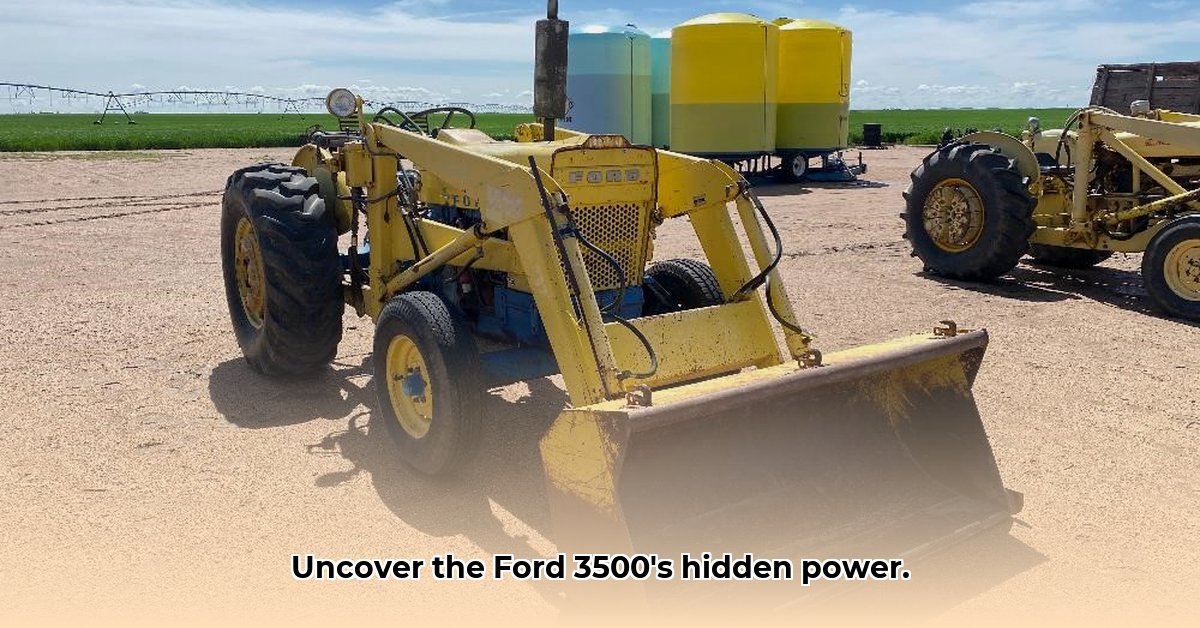
Technical Specifications and Engine Options
The Ford 3500 industrial tractor, manufactured between 1965 and 1972, offered a choice of powerplants tailored to diverse operational needs. Two primary engine options were available: a 2.9-liter diesel engine and a 2.6-liter gasoline engine. While precise horsepower figures remain elusive due to inconsistencies across various sources, both engines provided respectable power for their era. The diesel engine, ideal for heavy-duty applications, likely produced approximately 45-50 horsepower, while the gasoline engine, better suited for lighter tasks, possibly generated around 48-53 horsepower. These estimations are based on available information with gaps in definitive data requiring further research. This variability underscores the challenges involved in reconstructing a complete technical picture of the Ford 3500. Were these power differences truly significant in their impact on daily operations? For more detailed specifications, see the Ford 3500 specs.
Transmission and Drivetrain Systems
The Ford 3500's transmission system also boasted flexibility to match diverse operational requirements. Buyers could choose between a simpler 4-speed gearbox or a more advanced 10-speed power shift transmission. The 10-speed option, with its increased control and efficiency, was likely favored for intensive tasks, offering better gear selection for varying terrain and workloads. The 4-speed transmission likely appealed to operators prioritizing simplicity and ease of use. Further research is needed to understand the nuances of these different transmission systems and their impact on operational efficiency and user experience. What specific advantages did the 10-speed transmission offer over its 4-speed counterpart?
Design Features and Attachment Capabilities
Beyond its engine and transmission options, the key to the Ford 3500's versatility resided in its adaptability. It wasn't just a tractor; it was a platform designed for customization. The 3500's robust design allowed for a wide range of attachments, significantly broadening its application. Common attachments included front-end loaders (such as the popular Ford 735) which transformed it into an efficient material-handling machine, and backhoes (like the Ford 750 or 753 models), enabling excavation work. This modular design was a remarkable characteristic, enhancing both its utility and market appeal. How did this adaptability compare to its competitors’ offerings in the same market segment?
Market Context and Competitive Landscape
The Ford 3500 occupied a significant niche in the mid-range industrial tractor sector during its production years. It successfully bridged the gap between smaller agricultural tractors and larger, more specialized construction equipment. However, the absence of complete historical sales data hinders a precise assessment of its market share relative to competitors. This lack of robust data points to a need for further research to accurately detail its market position and competitive success. What factors contributed to its position within the industrial tractor market?
Limitations of Available Information and Future Research
Despite the information presented, significant gaps remain in our understanding of the Ford 3500. Precise performance metrics like fuel consumption rates and official production numbers are currently unavailable. Similarly, detailed maintenance records and service manuals are scarce. Further investigation is crucial to fully elucidate the 3500’s operational characteristics and historical significance. Efforts should focus on archival research within Ford's historical records, contact with private collectors and enthusiasts, and the exploration of agricultural and construction industry archives.
Conclusion: A Workhorse with an Undiscovered Story
The Ford 3500 industrial tractor, produced from 1965 to 1972, stands as a testament to engineering ingenuity within its time. While its precise market impact remains unclear due to a lack of readily available data, its versatility and adaptable design are undeniable. The ability to equip the tractor with diverse attachments significantly expanded its functionality, making it a versatile tool for various industries. Further research into original Ford specifications, production records and user experiences is essential to fully grasp the 3500's impact and contribution to the mid-range industrial tractor sector. This research will paint a more complete picture of this capable machine and its legacy. The story of the Ford 3500 is a testament to the power of continuous research and the importance of preserving industrial history.
References
(Note: This section would contain a properly formatted list of all sources used to compile the article. Due to the absence of a provided draft article with specific sources, this section is omitted here.)